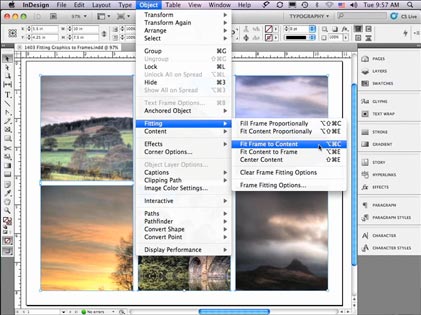

control how an image will be converted to JPG/GIF/PNG (resolution, etc.).
Adobe incopy cs5.5 pdf#
apply Alt text (for the visually impaired or for situations when graphics are turned off) or tag an object as an “Artifact” so that it won’t be read aloud by PDF screen readers.Here’s an awesome improvement: You can select an object choose Object > Object Export Options to: By default, it’s the same name as the character or paragraph style you’re editing, but you can always change the name to something shorter or more CSS-friendly, a lot easier than renaming the style sheets. Another nice feature is that the Class field is also editable. For example, we might want to manually enter the HTML element “blockquote” in the Tag field. In the example above, we’re editing a paragraph style called “Pullquote.” InDesign’s default behavior (what you get if you leave the Tag field set to ) is no different than before - the paragraph will be formatted as a regular paragraph with the style name as a class attribute: in the exported EPUB/HTML file. In either case, you can click inside the Tag field and manually enter a completely different tag that you want InDesign to use for that style. For paragraph styles, you can choose to map the style to a Header tag (h1-h6) for character styles, you can choose from span, em, and strong. It lets you override how InDesign maps your InDesign-styled text to CSS styles and HTML or Tagged PDF markup. Style MappingĮxport Tagging is a new option at the bottom of both the Paragraph Style Options and Character Style Options dialog boxes. There’s no doubt that linked stories could be very helpful for some people, but most people will likely end up ignoring this feature unless Adobe makes it more robust.
Adobe incopy cs5.5 update#
Note that you cannot change the formatting or the text in the “child/clone.” Well, actually, you can, but if you later change the parent and then click Update in the Links panel, any changes you’ve made to the child are wiped out - again, just the same as it has always worked in linked Word docs. But the ability now to link from one story to another inside the same document is novel. Linked text is not technically new you’ve been able to link to Word and Excel docs for many years (by turning on a checkbox in the Preferences dialog box). Change the “parent” text and the “child” text changes, too. Have some text that shows up looking the same in 15 different places in your document? You can now duplicate a story and link the duplicate to the original, like a clone. Now, in CS5.5, you can set a story’s order in the new Articles panel. An article can combine multiple text and graphic frames, and then allows you to rearrange their order. Order is particularly important when trying to export EPUB, XHTML, or accessible PDFs, but can be important at other times, too. Until now, if you wanted to specify an order for your stories - that is, headline first, subhead next, then story, and so on - you had to either put everything in the same text thread or use the Structure Pane (which was designed for XML and is difficult to master).


Adobe today announced a significant release of InDesign and the Creative Suite, dubbed 5.5! While there is a little for everyone - there’s one or two features that will excite every CS5 user - how much you’ll want 5.5 directly correlates to how much work you do with interactive documents (EPUB, DPS, HTML, and accessible PDF files).


 0 kommentar(er)
0 kommentar(er)
